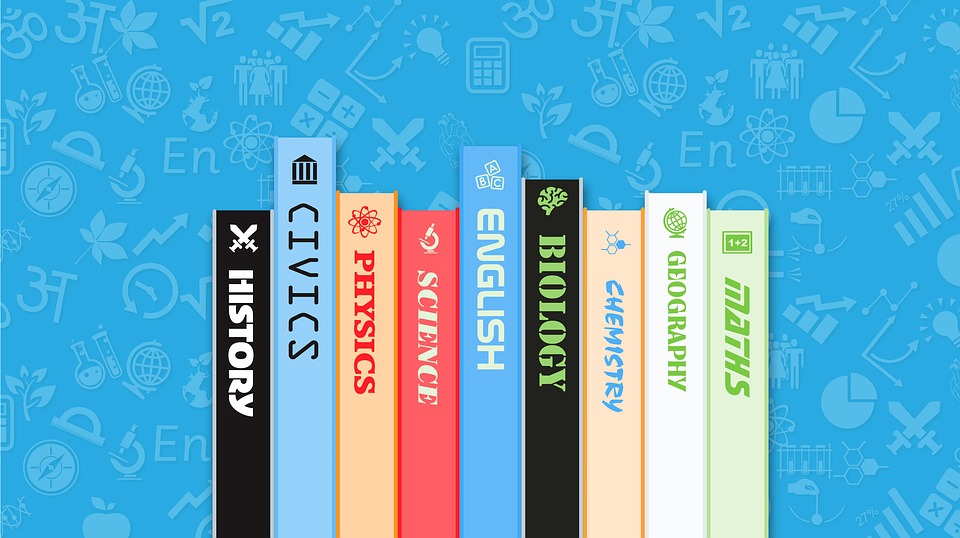
Reading speed plays a vital role in academic success, especially for students who must cover large volumes of material in limited time. While it might seem tempting to rush through texts, doing so can often lead to missing key points or misunderstanding content. The key is to develop techniques that help improve speed while maintaining comprehension. In this article, you’ll discover five effective strategies to elevate your reading efficiency without sacrificing understanding.
Use a Pointer or Guide While Reading
One of the simplest yet most effective strategies is using a physical guide, such as a finger, pen, or pointer, to move across the text. This technique helps focus attention and reduce the number of times your eyes jump backward, known as regression. By guiding your eyes forward consistently, you can subtly increase reading momentum while staying on track with the content. This method is especially helpful for students prone to distractions or those who tend to reread lines repeatedly.
Minimize Subvocalization
Subvocalization is the habit of silently pronouncing words in your head while reading. Although it helps with understanding, it can significantly slow down reading speed. To counter this, students can try focusing on visualizing the meaning of words or use a pacer to move faster than their internal voice can follow. While you shouldn’t eliminate inner speech entirely, minimizing it can enhance speed without drastically affecting comprehension.

Expand Peripheral Vision Range
Most readers fixate on individual words or small word groups. Training your eyes to capture multiple words at once can cut down reading time dramatically. You can practice this by using text blocks and trying to comprehend chunks of three to five words at a glance. Over time, this technique helps process information faster without needing to read every single word. It fosters broader focus and supports the retention of main ideas and context.
Skim Strategically Before Deep Reading
Skimming is more than just glossing over a page; it’s about identifying main ideas, key terms, and structure before reading in detail. This preview enables you to approach the material with context, allowing you to prioritize important sections and spend less time on less critical content. This targeted reading approach helps in staying efficient without skipping valuable information.
Practice Timed Reading Sessions
Improvement stems from consistent practice. By setting a timer and reading under time constraints, students can gradually train themselves to read faster. Choose a passage and record how many words you read in a set period. Then, evaluate your comprehension. Repeating this exercise regularly while slowly increasing your speed helps create a balance between pace and understanding. This method builds discipline and strengthens concentration skills, both of which are vital for efficient reading.

Conclusion
Boosting reading speed without losing comprehension is achievable through deliberate practice and the right techniques. Methods like using a pointer, minimizing subvocalization, broadening your visual span, strategic skimming, and timed reading sessions can make a noticeable difference. Incorporating such practices into your study routine can enhance your academic performance and make reading a more rewarding experience. Remember, speed alone isn’t the goal—the true benefit comes from reading efficiently while grasping the full meaning of the text.…












 Aspiring blacksmiths find themselves at the intersection of tradition and innovation. The company serves as a hub for artistic expression, restoration projects, and entrepreneurial ventures. Artisans are given the canvas to craft unique pieces, from ornate sculptures to functional metalwork that marries form and function.
Aspiring blacksmiths find themselves at the intersection of tradition and innovation. The company serves as a hub for artistic expression, restoration projects, and entrepreneurial ventures. Artisans are given the canvas to craft unique pieces, from ornate sculptures to functional metalwork that marries form and function.




 The Scrum Alliance, one of the most recognized and reputable certifying bodies for Scrum Masters, has a straightforward renewal process. Certified Scrum Masters must earn 40 Scrum Education Units (SEUs) within two years to renew their certification. The SEUs are earned by participating in educational activities that enhance the Scrum Master’s knowledge and skills. These include attending conferences, webinars, workshops, or even teaching others about Scrum. In addition to earning 40 SEUs, certified Scrum Masters must also pay a renewal fee of $100 every two years. This fee helps cover the administrative costs of maintaining the certification and supporting the Scrum community.
The Scrum Alliance, one of the most recognized and reputable certifying bodies for Scrum Masters, has a straightforward renewal process. Certified Scrum Masters must earn 40 Scrum Education Units (SEUs) within two years to renew their certification. The SEUs are earned by participating in educational activities that enhance the Scrum Master’s knowledge and skills. These include attending conferences, webinars, workshops, or even teaching others about Scrum. In addition to earning 40 SEUs, certified Scrum Masters must also pay a renewal fee of $100 every two years. This fee helps cover the administrative costs of maintaining the certification and supporting the Scrum community.




 Okay, but what if you’re not a morning person, you feel more energized when the sun goes down. If so, this job is still for you, thanks to its flexible work schedule. Unlike traditional 9-to-5 jobs, truck drivers have more flexibility in their schedules. Some may prefer to work during the day, while others might prefer night shifts.
Okay, but what if you’re not a morning person, you feel more energized when the sun goes down. If so, this job is still for you, thanks to its flexible work schedule. Unlike traditional 9-to-5 jobs, truck drivers have more flexibility in their schedules. Some may prefer to work during the day, while others might prefer night shifts.


 First, let’s talk about the most popular choice of all. General nurse practitioners are the most common type of nurse practitioner. They provide general primary health care services, including diagnosing and treating illnesses, ordering lab tests, and prescribing medications.
First, let’s talk about the most popular choice of all. General nurse practitioners are the most common type of nurse practitioner. They provide general primary health care services, including diagnosing and treating illnesses, ordering lab tests, and prescribing medications. Third is the gerontological nurses. This specialty focuses on providing care to elderly patients. Gerontological nurses specialize in addressing the unique needs of older patients, such as helping them adjust to chronic conditions or age-related restrictions.
Third is the gerontological nurses. This specialty focuses on providing care to elderly patients. Gerontological nurses specialize in addressing the unique needs of older patients, such as helping them adjust to chronic conditions or age-related restrictions.


 Children tend to be more creative when they play on playground equipment. By exploring the different pieces of playground equipment, they can come up with new games and activities that allow them to use their imagination and problem-solving skills.
Children tend to be more creative when they play on playground equipment. By exploring the different pieces of playground equipment, they can come up with new games and activities that allow them to use their imagination and problem-solving skills. Often, playgrounds provide kids with a safe environment to test their abilities and try new things. This can help boost their confidence as they learn that they are capable of accomplishing anything as long as they put in the work. By having access to playground equipment, children can discover what they’re good at and make mistakes without fear of judgment or ridicule from other peers. This can help them become more confident and secure in themselves, which is important for their overall development.
Often, playgrounds provide kids with a safe environment to test their abilities and try new things. This can help boost their confidence as they learn that they are capable of accomplishing anything as long as they put in the work. By having access to playground equipment, children can discover what they’re good at and make mistakes without fear of judgment or ridicule from other peers. This can help them become more confident and secure in themselves, which is important for their overall development.
 Don’t underestimate the power of networking when it comes to finding a job. Making connections with people in your chosen field can help you learn about open positions, get advice on applying for jobs, and increase your chances of securing an offer. Reach out to colleagues, classmates, and professionals in your area to start building relationships.
Don’t underestimate the power of networking when it comes to finding a job. Making connections with people in your chosen field can help you learn about open positions, get advice on applying for jobs, and increase your chances of securing an offer. Reach out to colleagues, classmates, and professionals in your area to start building relationships.
 Before anything else, you must check whether you meet all the job requirements. These can include education, qualifications, and experience. Make sure you understand all the job details before you apply. Once you tick all the boxes, you can move to the next step.
Before anything else, you must check whether you meet all the job requirements. These can include education, qualifications, and experience. Make sure you understand all the job details before you apply. Once you tick all the boxes, you can move to the next step. Many employers offer benefits packages in addition to salaries that can be advantageous to employees. This could include health insurance, vacation time, and a retirement plan. Make sure you understand the benefits of any job to make an informed decision.
Many employers offer benefits packages in addition to salaries that can be advantageous to employees. This could include health insurance, vacation time, and a retirement plan. Make sure you understand the benefits of any job to make an informed decision. The location of the job is an important factor to consider, especially if you’re relocating for work. Think about the commute and how it would fit into your daily schedule. Additionally, consider what kind of lifestyle you want to lead (urban or suburban) and find a job that aligns with your preferences.
The location of the job is an important factor to consider, especially if you’re relocating for work. Think about the commute and how it would fit into your daily schedule. Additionally, consider what kind of lifestyle you want to lead (urban or suburban) and find a job that aligns with your preferences.
 Online credit consultation agencies are a great way to get on the right track for your finances. Sometimes, you need a little help to get started. Learning to budget and cut unnecessary spending can be challenging, especially when it doesn’t come naturally.
Online credit consultation agencies are a great way to get on the right track for your finances. Sometimes, you need a little help to get started. Learning to budget and cut unnecessary spending can be challenging, especially when it doesn’t come naturally. With the advice from an online
With the advice from an online  These are toys that are meant to encourage your kid to learn. As your kid plays with the toy, he or she learns something new. The truth is that there is a strong link between educational toys and learning. However, many of the toys available do not provide educational value to the kids. It is advisable to consider getting open-ended and
These are toys that are meant to encourage your kid to learn. As your kid plays with the toy, he or she learns something new. The truth is that there is a strong link between educational toys and learning. However, many of the toys available do not provide educational value to the kids. It is advisable to consider getting open-ended and  When playing with toys, you need to be realistic about the promises made by the sellers. Remember that your child can only develop at a unique pace. If you try to speed up the development of your child, you might end up slowing it down. You should be careful to avoid preventing your child from doing certain important things that are part of the development process.
When playing with toys, you need to be realistic about the promises made by the sellers. Remember that your child can only develop at a unique pace. If you try to speed up the development of your child, you might end up slowing it down. You should be careful to avoid preventing your child from doing certain important things that are part of the development process.
 Many online platforms offer homework help services, so you can be confused when choosing the best. The first thing to consider is the subjects you have majored in that require expert help and then look for the homework help service is offering them. Some companies may claim to provide services for all the subjects. Narrowing down your options to companies providing specific services to your area of study gives you a higher chance of getting the best help. You can also choose a service provider with better ratings in the subject to ensure that you are getting the best tutor available.
Many online platforms offer homework help services, so you can be confused when choosing the best. The first thing to consider is the subjects you have majored in that require expert help and then look for the homework help service is offering them. Some companies may claim to provide services for all the subjects. Narrowing down your options to companies providing specific services to your area of study gives you a higher chance of getting the best help. You can also choose a service provider with better ratings in the subject to ensure that you are getting the best tutor available.
 If a student finds the topic very challenging, getting a good mark may still be hard to achieve. There are some assignments that may need advanced analytical prowess before you can get to the right answer. You may need to research extensively and spend much of your time. But what if you cannot find the right reference? What if you do not have much time? Indeed, you have to sort things out to do your assignment right and make it on time. But most often than not, some students may not be able to this, and so they submit a not-so-good finished product.
If a student finds the topic very challenging, getting a good mark may still be hard to achieve. There are some assignments that may need advanced analytical prowess before you can get to the right answer. You may need to research extensively and spend much of your time. But what if you cannot find the right reference? What if you do not have much time? Indeed, you have to sort things out to do your assignment right and make it on time. But most often than not, some students may not be able to this, and so they submit a not-so-good finished product. Wrong Help
Wrong Help





 When one wins a scholarship, either national or international, they will have a higher possibility of getting involved with people with similar interests and also people who win similar scholarships. This situation profoundly affects the lives of the awardees since they will have a higher chance of developing stronger networking opportunities. The networks are indeed their biggest help when the time comes for them to apply their knowledge in the
When one wins a scholarship, either national or international, they will have a higher possibility of getting involved with people with similar interests and also people who win similar scholarships. This situation profoundly affects the lives of the awardees since they will have a higher chance of developing stronger networking opportunities. The networks are indeed their biggest help when the time comes for them to apply their knowledge in the 



 Most people struggle with Chemistry because they do not approach it in the right way. If you want to pass Chemistry, make sure that you have various study skills that will help you to understand how you should learn or study it. Below are some of the proven techniques and strategies that will improve your ability to learn and study Chemistry.
Most people struggle with Chemistry because they do not approach it in the right way. If you want to pass Chemistry, make sure that you have various study skills that will help you to understand how you should learn or study it. Below are some of the proven techniques and strategies that will improve your ability to learn and study Chemistry. The key secret to studying and learning Chemistry is practice. Working formulas, solving equations and completing practice problems should be one of the core features of your daily study routine. It is essential to test your understanding of Chemistry by answering some of the tests at the end of each topic.…
The key secret to studying and learning Chemistry is practice. Working formulas, solving equations and completing practice problems should be one of the core features of your daily study routine. It is essential to test your understanding of Chemistry by answering some of the tests at the end of each topic.…
 Once you have hired the best and professional agencies, there are a lot of benefits you will get. Therefore, make sure that you retain experienced recruitment agencies if you want your customers to get the best services. Below are the advantages of using a recruitment agency.
Once you have hired the best and professional agencies, there are a lot of benefits you will get. Therefore, make sure that you retain experienced recruitment agencies if you want your customers to get the best services. Below are the advantages of using a recruitment agency. At times, when the employer decides to advertise vacancies, they end up not receiving the right applications of the required area. In most cases, they do not know some of the best aspects they should use when advertising.
At times, when the employer decides to advertise vacancies, they end up not receiving the right applications of the required area. In most cases, they do not know some of the best aspects they should use when advertising.



 Working in an office means wearing formally and sitting all day wearing such outfits can be infuriating. Besides matters outfit, the formalities involved in any office set up can be energy-sapping at times. On the other hand, working from homes takes care of these formalities, and you can always work with what you feel comfortable without having to worry about the surroundings.
Working in an office means wearing formally and sitting all day wearing such outfits can be infuriating. Besides matters outfit, the formalities involved in any office set up can be energy-sapping at times. On the other hand, working from homes takes care of these formalities, and you can always work with what you feel comfortable without having to worry about the surroundings.